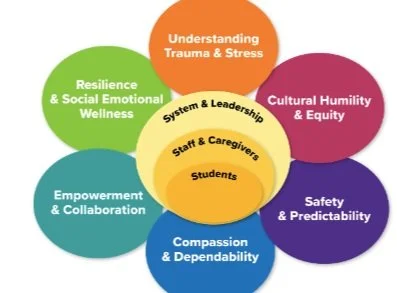Community Facilitation
-

Mental Health First Aid
Youth Mental Health First Aid is designed to teach parents, family members, caregivers, teachers, school staff, peers, neighbors, health and human services workers, and other caring citizens how to help an adolescent (age 12-18) who is experiencing a mental health or addictions challenge or is in crisis. Youth Mental Health First Aid is primarily designed for adults who regularly interact with young people. The course introduces common mental health challenges for youth, reviews typical adolescent development, and teaches a 5-step action plan for how to help young people in both crisis and non-crisis situations. Topics covered include anxiety, depression, substance use, disorders in which psychosis may occur, disruptive behavior disorders (including AD/HD), and eating disorders.
-

safeTALK
Develop suicide alertness and safety connection skills
LivingWorks safeTALK provides in-depth skills to recognize signs of suicide, engage someone, and ensure a connection to safety. The in-person format includes powerful audiovisuals and live practice.
-

Trauma-Informed Care
Trauma-informed care seeks to: Realize the widespread impact of trauma and understand paths for recovery; Recognize the signs and symptoms of trauma in patients, families, and staff; Integrate knowledge about trauma into policies, procedures, and practices; and. Actively avoid re-traumatization. Adopting trauma-informed practices can potentially improve schools, businesses, and community organizations engagement, resources, and health outcomes, as well as staff wellness. This is a practice that is being implemented across schools and community organizations to increase student achievement and connectedness.
-

Talk Saves Lives
Talk Saves Lives is AFSP’s standardized, 1.5 hour education program that provides participants with a clear understanding of this leading cause of death, including the most up-to-date research on suicide prevention, and what they can do in their communities to save lives.
Participants will learn common risk factors and warning signs associated with suicide, and how to keep themselves and others safe.
Topics covered include:
Scope of the Problem: The latest data on suicide in the U.S. and worldwide
Research: Information from research on what causes people to consider suicide, as well as health, historical, and environmental factors that put individuals at risk
Prevention: An understanding of the protective factors that lower suicide risk, and strategies for managing mental health and being proactive about self-care
What You Can Do: Guidance on warning signs and behaviors to look for, and how to get help for someone in a suicidal crisis
